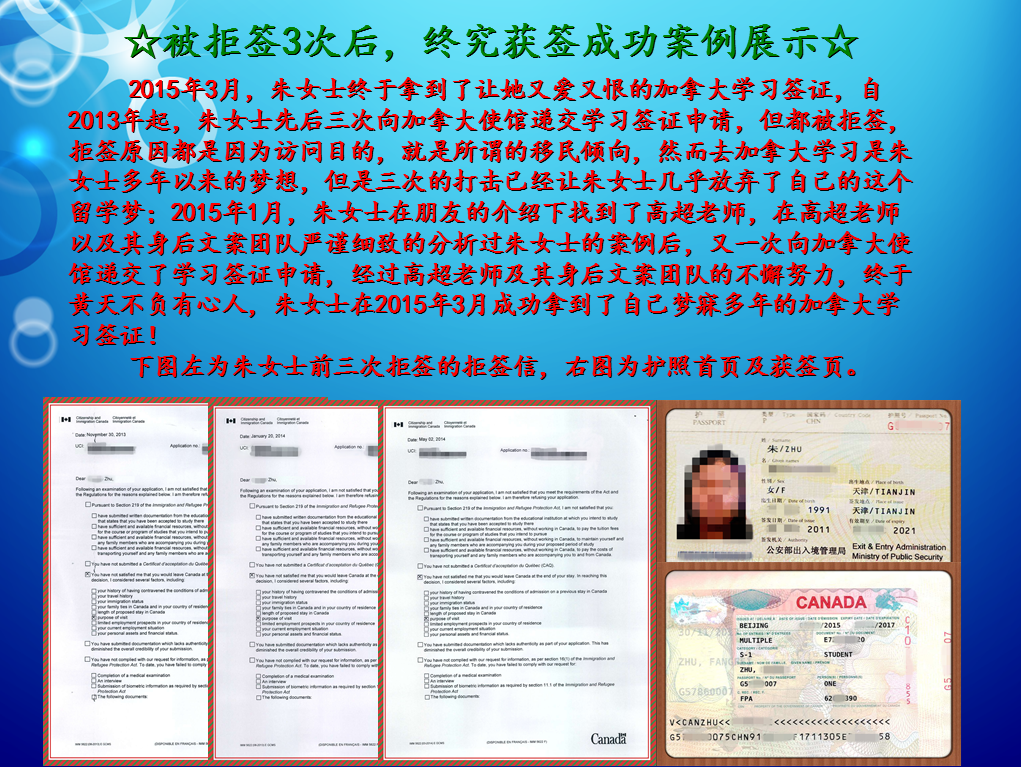GMAT考试 4月9日更新GMAT阅读机经(一).
2017-08-10 182阅读
GMAT考试已于2012年4月2日更换题库,以下是2012年4月的GMAT阅读机经更新,更新日期从2012年4月2日起,澳际留学小编将为您提供最新的GMAT阅读机经。说明:绿色代表考古标志,凡是未确认的都有红标,没红标的就是已经确认了;粉色代表参考答案;红色代表重要提示;靛蓝代表参考文献,各种底色代表问题答案所对应的原文段落,详情请见问题后面的粉色描述。澳际留学在此祝大家GMAT考试顺利,得胜归来!
1*. 工厂自动化普及和客户定制服务
V1:by foreveroflam
机器人和自动化已经在工厂很普及了,现在企业如果单从质量和成本来竞争的话,差距不大,尤其是mass production之后,生产和研发,服务脱节,都是大批量标准化的产品,少了很多feasibility. 作者举出为顾客量身定制才是王道,比如客户参与设计改良,客户需要order小批量生产,售前服务售后服务等等。
Q1:主旨题:有难度,因为没有内容,五个选项都是Challenge argument, Recommend change of process, Disagree with newly advanced opinion等等宽泛笼统的哲学词语
Q2:传统工厂infer以下哪种:我选traditional factory生产的都是大批量的货品 (对比作者小批量定制的提议)
Q3:一下哪个不是作者提倡的: 选 生产只是单纯的meet deadline,而不考虑客户实际需求。(有原文,简单)
Q4: the dinition of service of the traditional industries includes which of the following? 很简单,原文中找,就是那个“commitment of meeting date”题目中是“meeting deadline”。然后那个原文concern about什么,楼主选的是“recommend a new approach(之类的)
考古(未经过本人确认)
说想象过整个工厂都是计算器和机器人在工作吗?事实上现下的工厂完全可以做到这样。只不过因为它们的竞争对手也有这样的技术水准,所以做成这样也没用。现下的企业还是需要特别关心对顾客的服务,包括售前和售后的。从前的手工艺人就是靠细致的服务,从设计到制作到修改,来赢得客户。当大生产开始后,人们放弃了昂贵的手工订做,转向批量制作的商品。设计制作这道工序开始被从销售的前期工作中剥离,它与后期工作即售后服务的关系也不那么紧密了,但是,转变并没有那么剧烈。即使是最道统的工厂也要考虑到顾客的需求,哪怕这样的考虑仅仅是要按时交货(出题)。而工厂里的制作工人往往能对销售人员起非常重要的作用,比如及时提供货品的数据以帮助他们赢得更多的订单(出题),还比如可以向顾客解释产品的特性以及修理产品。
参考文献(感谢airphone 提供) 偏长,貌似不完全是原文,但是重心思想类似,有时间的同学可以看下
The factory of the future is not a place where computers, robots, and flexible machines do the drudge work. That is the factory of the present, which, with money and brains, any manufacturing business can build. Of course, any competitor can build one too—which is why it is becoming harder and harder to compete on manufacturing excellence alone. Lower costs, higher quality, and greater product variety are like table stakes in poker—the price that companies pay to enter the game. Most products can be quickly and easily imitated; and the most automated design and production processes cannot decisively beat the second most automated. Who wins and who loses will be determined by how companies play, not simply by the product or process technologies that qualify them to compete.
The manufacturers that thrive into the next generation, then, will compete by bundling services with products, anticipating and responding to a truly comprehensive range of customer needs. Moreover, they will make the factory itself the hub of their forts to get and hold customers—activities that now are located in separate, often distant, parts of the organization. Production workers and factory managers will be able to forge and sustain new relationships with customers because they will be in direct and continuing contact with them. Manufacturing, in short, will become the cortex of the business. Today’s flexible factories will become tomorrow’s service factories.
• • •
About 200 years ago, when horse-drawn carriages were made largely by craftsmen, the most successful carriage maker was invariably the most accommodating. Though he prided himself on being a technician—a manufacturer—his success depended heavily on his willingness and ability to talk with customers at key points: bore the sale, so he could get a clear idea of what the client needed and what features would satisfy him; during the manufacturing process, so he could incorporate any necessary changes in the product; and after delivery, so he could learn what features had worked (and what hadn’t) and what the client needed for maintenance, repair, and replacement.
Mass production overtook customized craftsmanship because customers came to value standardized goods over higher priced, personalized goods. As a result, work grew increasingly compartmentalized through the division of labor. Craftsmanship (that is, manufacturing) became separated from downstream activities, like sales and postpurchase service, as well as from upstream activities, like new-product development and design. Gradually, manufacturing received more and more of its information and instructions through filters—divisions and departments that were separated, functionally and physically, from the production site. Not surprisingly, manufacturing managers complained that those who dined their work rarely understood it or cared enough about its details, problems, or technical possibilities.
For decades, companies muddled through. In recent years, as Japanese competition put pressure on manufacturing businesses everywhere, manufacturers have worked mightily and successfully to educate workers and break down some of the barriers between their upstream activities and the work of the factory. They have encouraged interfunctional communication between product designers and manufacturing engineers and between R&D and quality managers on the factory floor.
These imaginative forts to accelerate product innovation and improve manufacturing performance were necessary and important. But they are no longer adequate. Today downstream activities have to be joined to the tasks of the factory too. Increasingly, factory personnel have the means to support the sales force, service technicians, and consumers. This support should, and will, be used. Competition is shifting away from how companies build their products to how well they serve customers bore and after they build them.
• • •
Some of America’s best-run companies—Hewlett-Packard, Allen-Bradley, Caterpillar, Frito-Lay—already operate factories whose activities rlect the new role of service in manufacturing competition. None of their facilities is a complete service factory. We are still many years from that. But in the range of upstream and downstream activities these factories perform, and in the degree of interaction between production workers and customers, they point the way to the future.
Service for a manufacturing company inescapably revolves around its products—their design, features, durability, repairability, distribution, and ease of installation and use. Even the most traditional factories of yesterday proffered service of a kind, but their conception of service was narrow. To old-guard factory managers, service was little more than a commitment to meeting due dates. Logistics and distribution urged the factory to complete orders in a timely fashion, to give advance notice of delivery problems, and to package materials for ease of shipment and damage control. Customers were simply numbers on a production schedule.
以上就是4月9日更新的GMAT阅读机经,考生可以适当借鉴,并通过练习来掌握GMAT阅读的解题规律,从而在GMAT考试中发挥出更好的水平。 相关链接:
1.GMAT机经汇总 3月29日更新GMAT阅读机经
2.GMAT机经汇总 4月06日更新GMAT数学机经
3.GMAT逻辑Main conclusion要点总结
想要获得更多咨询服务点击进入 >>>>有问题?找免费的澳际专家咨询! 或联系QQ客服: ,也可以通过在线咨询处留言,把您最关心的问题告诉我们。
留学咨询
更多出国留学最新动态,敬请关注澳际教育手机端网站,并可拨打咨询热线:400-601-0022
留学热搜
相关推荐
- 专家推荐
- 成功案例
- 博文推荐

Copyright 2000 - 2020 北京澳际教育咨询有限公司
www.aoji.cn All Rights Reserved | 京ICP证050284号
总部地址:北京市东城区 灯市口大街33号 国中商业大厦2-3层









高国强 向我咨询
行业年龄 12年
成功案例 3204人
留学关乎到一个家庭的期望以及一个学生的未来,作为一名留学规划导师,我一直坚信最基本且最重要的品质是认真负责的态度。基于对学生和家长认真负责的原则,结合丰富的申请经验,更有效地帮助学生清晰未来发展方向,顺利进入理想院校。
Amy GUO 向我咨询
行业年龄 17年
成功案例 4539人
一切的一切从现在开始.用自己的态度闯出一片天
薛占秋 向我咨询
行业年龄 11年
成功案例 1869人
从业3年来成功协助数百同学拿到英、美、加、澳等各国学习签证,递签成功率90%以上,大大超过同业平均水平。
Tara 向我咨询
行业年龄 7年
成功案例 1869人